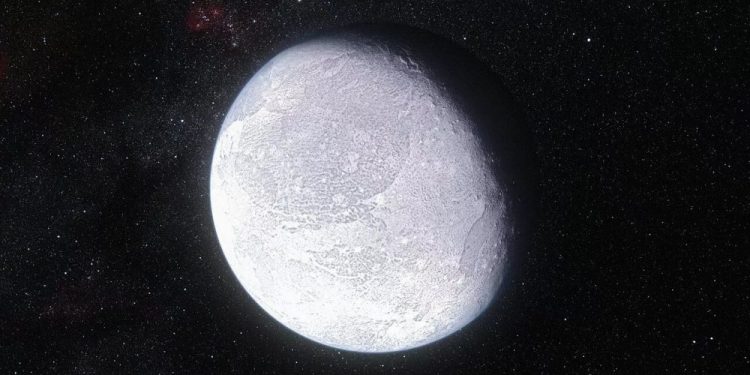Discovered in 2005, Eris is a dwarf planet that resides in the scattered disc region beyond Neptune. Its discovery not only expanded our understanding of the solar system but also played a pivotal role in redefining the criteria for planetary classification.
Here are some intriguing and lesser-known facts about Eris:
1. Eris’s Discovery Challenged Planetary Definitions
The identification of Eris in 2005 by astronomer Mike Brown and his team led to significant debates within the astronomical community. Initially considered the solar system’s tenth planet, Eris’s discovery prompted the International Astronomical Union (IAU) to redefine the term “planet” in 2006, ultimately leading to the reclassification of Pluto as a dwarf planet alongside Eris.
2. A Day on Eris is Surprisingly Earth-Like
Eris has a rotation period of approximately 25.9 hours, making its day length strikingly similar to that of Earth. This is in contrast to many other bodies in the outer solar system, which often have much longer or shorter days.
3. Eris and Dysnomia: A Tidally Locked Pair
Eris’s only known moon, Dysnomia, orbits the dwarf planet approximately every 15.8 days. Recent studies suggest that Eris and Dysnomia are tidally locked, meaning the same side of Eris always faces Dysnomia. This mutual tidal locking is a phenomenon observed in few other celestial pairs in our solar system.
4. Surface Composition Indicates Possible Cryovolcanism
Spectroscopic observations have revealed the presence of methane ice on Eris’s surface. The detection of light hydrocarbons and complex organic molecules suggests that Eris may have experienced cryovolcanic activity, where volatile substances like water, ammonia, or methane erupt instead of molten rock. This points to a more geologically active past than previously thought.
5. Eris’s Unexpectedly ‘Squishy’ Interior
Recent research indicates that Eris has a differentiated interior, consisting of a rocky core and an icy mantle. This internal structure suggests that Eris is more dissipative, or “squishy,” than expected, which has implications for its thermal and geological history.
6. Eris’s Orbit is Highly Inclined and Eccentric
Eris’s orbit around the Sun is notably tilted at an angle of about 44 degrees relative to the plane of the solar system, and it follows a highly eccentric path. This means that its distance from the Sun varies significantly over the course of its 557-year orbit, ranging from about 38 to 98 astronomical units.
7. The Naming of Eris and Dysnomia Reflects Astronomical Discord
The name “Eris” was chosen for the dwarf planet due to the discord its discovery caused in the astronomical community regarding the definition of a planet. Following this theme, its moon was named “Dysnomia,” after the Greek goddess of lawlessness and Eris’s daughter, reflecting the upheaval in astronomical classifications that Eris’s discovery instigated.
8. Eris’s High Albedo Makes It One of the Brightest Objects in the Solar System
Eris has an exceptionally high albedo, reflecting about 96% of the sunlight that strikes it. This makes it one of the brightest known objects in the solar system, even outshining Pluto. Its bright surface is primarily due to the presence of fresh methane ice.
9. Potential for a Subsurface Ocean
The possibility of a subsurface ocean on Eris has been a topic of scientific speculation. If such an ocean exists, it would have significant implications for our understanding of the potential habitability of distant icy worlds.
10. Eris Remains a Focus of Ongoing Research
As one of the most massive known dwarf planets in our solar system, Eris continues to be a subject of intense study. Future missions and advanced telescopic observations aim to uncover more about its composition, geology, and potential for harboring life, offering deeper insights into the complexities of our solar system.
FAQs:
- What makes Eris unique among dwarf planets?
Eris is the most massive known dwarf planet in the solar system and has a highly reflective surface, indicating fresh methane ice. - Why did the discovery of Eris lead to Pluto’s demotion?
Eris’s discovery prompted the International Astronomical Union to redefine what constitutes a planet, leading to Pluto’s reclassification as a dwarf planet. - Does Eris have a moon?
Yes, Eris has a moon called Dysnomia, which orbits it every 16 days.











